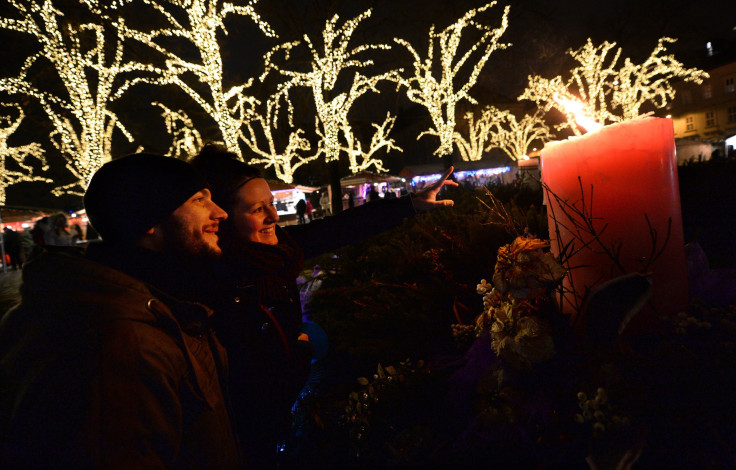What Is Advent 2015? Dates, Must-Know Facts About The Monthlong Season Preceding Christmas

There's a lot more to Advent than those chocolate calendars that fill the aisles of supermarkets in the month before Christmas. Advent, beginning Nov. 29 and ending the day before Christmas, is a period celebrated by Roman Catholics in preparation for the coming of Christ. Here's everything you need to know about the history and meaning of Advent.
Literally, advent derives from the Latin verb "advenire," which means "to come to" or "to arrive." Among Catholics, Advent is supposed to mark the arrival of three things: the birth of Christ, the coming of Christ in Catholics' lives and his Second Coming. It spans the four Sundays before Christmas.
Advent is traditionally celebrated with more praying and fasting -- not eating meat on Fridays, not snacking between meals -- and general good behavior, ahead of the celebrations accompanying Christmas. The Advent wreath is a standard symbol and includes four candles, three purple and one pink, in a circle around branches of yew, holly or another evergreen. When lit, the candles are supposed to symbolize the light of Christ.
Many people celebrate the countdown to Christmas with Advent calendars that present one item -- a chocolate, a tiny gift or toy, even a small portion of alcohol -- per day, frequently with a biblical verse or prayer. The National Catholic Register recommends celebrating Advent with special dinners on Sundays, acting out the Christmas story, setting up a Nativity scene and saying special prayers at meals.
The first known mention of Advent is found in the books making up the "History of the Franks," which mentions that in the year 480, St. Perpetuus ordered a fast three times a week in the weeks before Christmas, according to the Catholic News Agency. But it is unclear whether the practice began with Perpetuus or whether he was codifying an existing one.
© Copyright IBTimes 2024. All rights reserved.






















